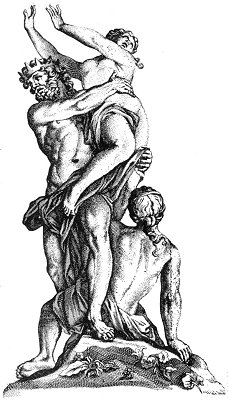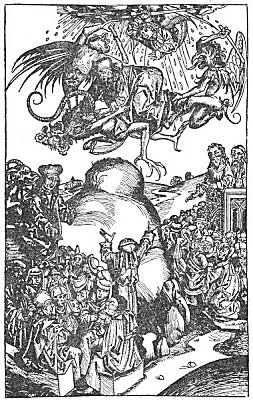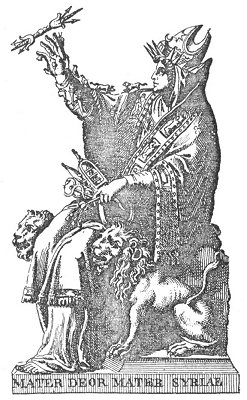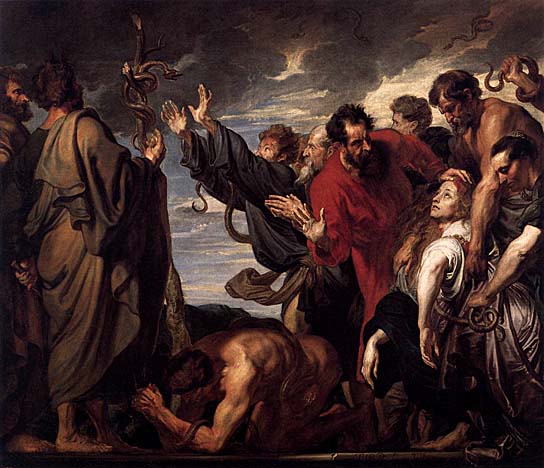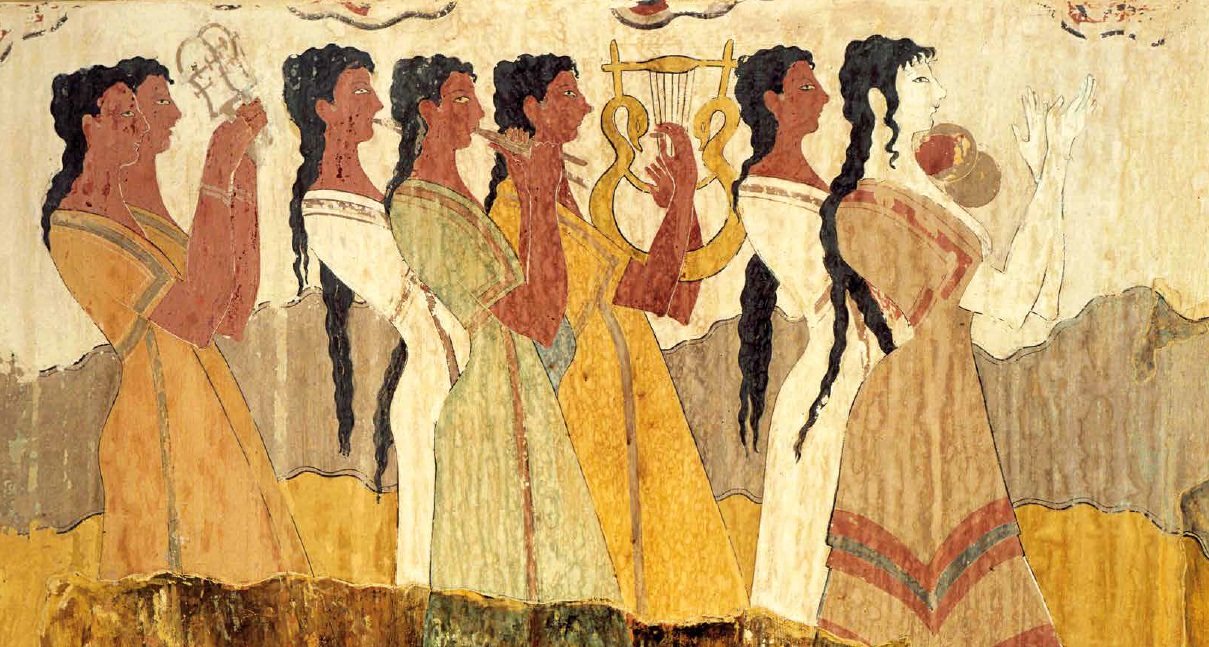Now, if the most ancient Indian manuscripts show as yet no trace of decimal notation in them, Max Muller states very clearly that until now he has found but nine letters (the initials of the Sanscrit numerals) in them — on the other hand we have records as ancient to supply the wanted proof. We speak of the sculptures and the sacred imagery in the most ancient temples of the far East. Pythagoras derived his knowledge from India; and we find Professor Max Muller corroborating this statement, at least so far as allowing the Neo-Pythagoreans to have been the first teachers of “ciphering” among the Greeks and Romans; that “they, at Alexandria, or in Syria, became acquainted with the Indian figures, and adapted them to the Pythagorean abacus” (our figures). This cautious allowance implies that Pythagoras himself was acquainted with but nine figures. So that we might reasonably answer that although we possess no certain proof that the decimal notation was known to Pythagoras, who lived on the very close of the archaic ages, we yet have sufficient evidence to show that the full numbers, as given by Boethius, were known to the Pythagoreans, even before Alexandria was built. This evidence we find in Aristotle, who says that “some philosophers hold that ideas and numbers are of the same nature, and amount to TEN in all.” This, we believe, will be sufficient to show that the decimal notation was known among them at least as early as four centuries B.C., for Aristotle does not seem to treat the question as an innovation of the “Neo-Pythagoreans.”
Besides, as we have remarked above, the representations of the archaic deities, on the walls of the temples, are of themselves quite suggestive enough. So, for instance, Vishnu is represented in the Kurmavatara (his second avatar) as a tortoise sustaining a circular pillar, on which the semblance of himself (Maya, or the illusion) sits with all his attributes.
Page 301
While one hand holds a flower, another a club, the third a shell, the fourth, generally the upper one, or at the right — holds on his forefinger, extended as the cipher 1, the chakra, or discus, which resembles a ring, or a wheel, and might be taken for the nought. In his first avatar, the Matsyavatam, when emerging from the fish’s mouth, he is represented in the same position. The ten-armed Durga of Bengal; the ten-headed Ravana, the giant; Parvati — as Durga, Indra, and Indrani, are found with this attribute, which is a perfect representation of the May-pole.
The holiest of the temples among the Hindus, are those of Jaggarnath. This deity is worshipped equally by all the sects of India, and Jaggarnath is named “The Lord of the World.” He is the god of the Mysteries, and his temples, which are most numerous in Bengal, are all of a pyramidal form.
There is no other deity which affords such a variety of etymologies as Iaho, nor a name which can be so variously pronounced. It is only by associating it with the Masoretic points that the later Rabbins succeeded in making Jehovah read “Adonai” — or Lord. Philo Byblus spells it in Greek letters [[IEUO]] — IEVO. Theodoret says that the Samaritans pronounced it Iabe (Yahva) and the Jews Yaho; which would make it as we have shown I-ah-O. Diodorus states that “among the Jews they relate that Moses called the God [[Iao]].” It is on the authority of the Bible itself, therefore, that we maintain that before his initiation by Jethro, his father-in-law, Moses had never known the word Iaho. The future Deity of the sons of Israel calls out from the burning bush and gives His name as “I am that I am,” and specifies carefully that He is the “Lord God of the Hebrews” (Exod. iii. 18), not of the other nations. Judging him by his own acts, throughout the Jewish records, we doubt whether Christ himself, had he appeared in the days of the Exodus, would have been welcomed by the irascible Sinaitic Deity. However, “The Lord God,” who becomes, on His own confession, Jehovah only in the 6th chapter of Exodus (verse 3) finds his veracity put to a startling test in Genesis xxii. 14, in which revealed passage Abraham builds an altar to Jehovah-jireh.

Moe is the founder of GnosticWarrior.com. He is a father, husband, author, martial arts black belt, and an expert in Gnosticism, the occult, and esotericism.


